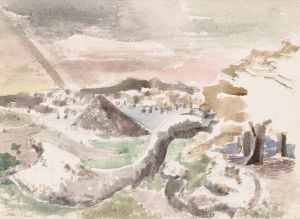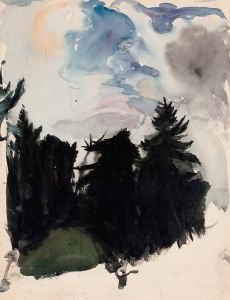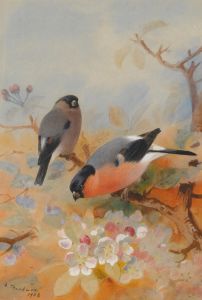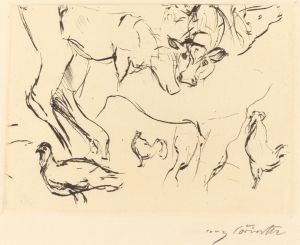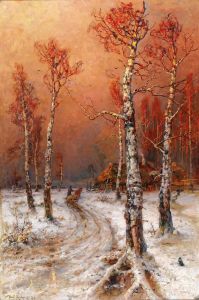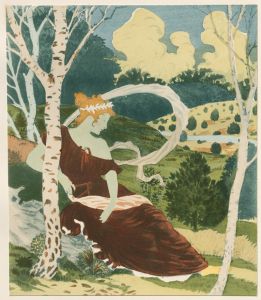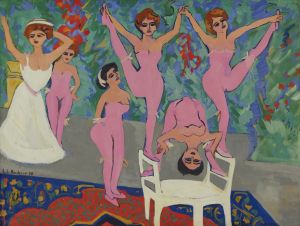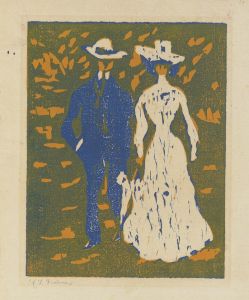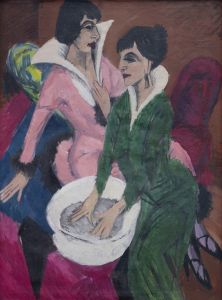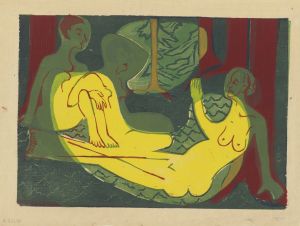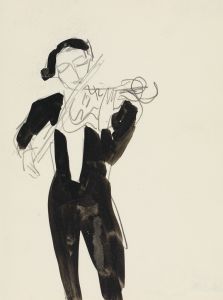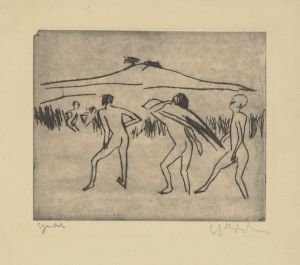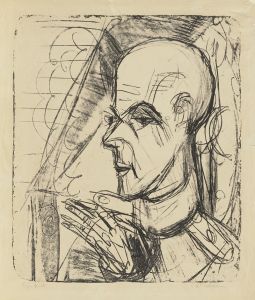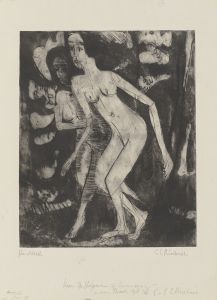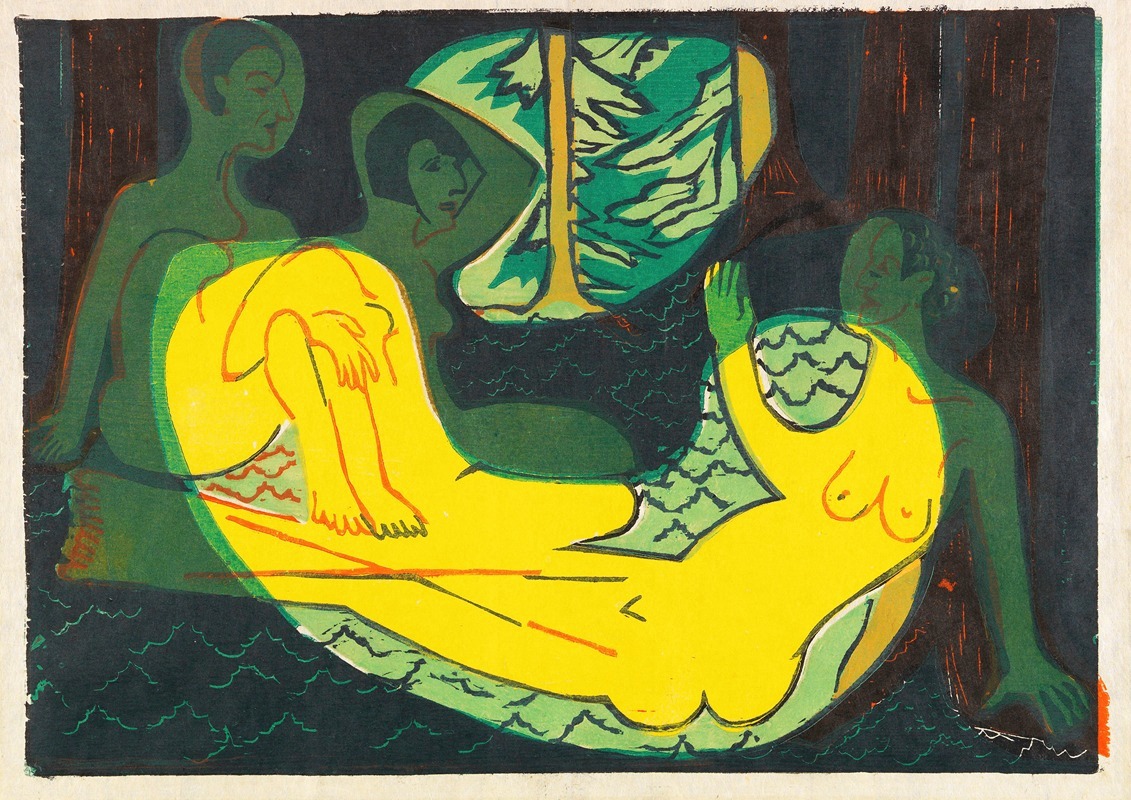
Drei Akte im Walde
A hand-painted replica of Ernst Ludwig Kirchner’s masterpiece Drei Akte im Walde, meticulously crafted by professional artists to capture the true essence of the original. Each piece is created with museum-quality canvas and rare mineral pigments, carefully painted by experienced artists with delicate brushstrokes and rich, layered colors to perfectly recreate the texture of the original artwork. Unlike machine-printed reproductions, this hand-painted version brings the painting to life, infused with the artist’s emotions and skill in every stroke. Whether for personal collection or home decoration, it instantly elevates the artistic atmosphere of any space.
Ernst Ludwig Kirchner's painting Drei Akte im Walde (Three Nudes in the Forest) is a work by the German Expressionist artist, created in 1913. Kirchner was a founding member of the art movement Die Brücke (The Bridge), which sought to break away from traditional academic art and explore more expressive and emotional forms of representation. This painting exemplifies the group's interest in nature, the human figure, and a raw, unpolished aesthetic.
The composition of Drei Akte im Walde features three nude female figures situated in a forest setting. The figures are depicted in a stylized and simplified manner, with bold outlines and vibrant, non-naturalistic colors. The forest is rendered with dynamic brushstrokes and a sense of movement, creating an almost dreamlike atmosphere. The painting reflects Kirchner's fascination with the harmony between humans and nature, a theme that recurs throughout his work.
Kirchner's approach to the human form in this painting is characteristic of his Expressionist style. The figures are not anatomically precise but are instead distorted to convey emotion and energy. This abstraction aligns with the broader goals of Die Brücke, which sought to evoke a primal, almost spiritual connection to the natural world. The use of color in Drei Akte im Walde is particularly striking, with vivid greens, blues, and earthy tones dominating the palette.
The painting was created during a period of significant artistic development for Kirchner. By 1913, he had moved to Berlin, where his style became increasingly bold and experimental. This work reflects his transition from the earlier influences of Post-Impressionism and Fauvism to a more distinctly Expressionist approach. The themes of nudity and the forest also tie into the ideals of Die Brücke, which often celebrated a return to a more "primitive" and unspoiled way of life.
Today, Drei Akte im Walde is considered an important example of Kirchner's work and of the Expressionist movement as a whole. It demonstrates his ability to merge form, color, and emotion into a cohesive and impactful composition. The painting is held in a private collection and has been exhibited in various retrospectives of Kirchner's work, highlighting its significance within his oeuvre.
Ernst Ludwig Kirchner's contributions to modern art, including works like Drei Akte im Walde, continue to be celebrated for their innovative approach and emotional depth. His exploration of the human figure and the natural world remains influential in the study of Expressionism.





